#khao man gai appreciation
Explore tagged Tumblr posts
Text
Moonlight Chicken first episode impressions.
1) I reblogged these already, but I want to point to the fantastic analyses by @respectthepetty (here) and @isaksbestpillow (here), offering tremendous background context out of the gate. Due to @respectthepetty‘s past analyses of Big Dragon, I was also able to pick up on a lot of the Chinese-Thai themes that Moonlight Chicken is pulling from. (I LOVE the theme of the show starting during the Mid-Autumn Festival and the continued gazing at the moon throughout the episode. Gah. Cuts me deep.)
2) Give me a GOOD, SLOW BURN to start a series -- HELL yes. Wen’s PACE of going through life. Moment by moment, gaze by gaze, sigh by sigh, ache by ache. His silent moments, thinking moments. He’s in pain, and his whole being radiates it, and we’ll take our time finding out what it is. Love this. (Jesus -- MIX. Come awn. Could he BE any better of an actor? A master of a slow burn.)
3) Seeing Jim’s house, the open market, the streets -- I’ve never been to Thailand, but there was something about these scenes that reminded me of strolling the streets in Malaysia and it was making my heart ache. The birds chirping while the guys were eating their bowls of jok in the morning. Reminded me of having soup noodles with my family in an open-air restaurant, during a bright, sunny, humid morning. I miss SE Asia.
4) Desperately love the juxtaposition of Jim’s traditional house with Wen’s modern furniture. Wen is going back in time, somehow, with Jim -- Wen is drawn to it. I will love seeing what uncovers in this.
5) I literally internally squealed KHAAAAAOOOOOOO when I first saw him. Those boots!
6) NAIL AND BAIL
7) I need that red Hungry? apron with the chicken in the pocket.
I LOVED this first episode. For whoever reads this place regularly, y’all know that I’m finishing Bad Buddy this week as well, so it’s just a Aof household at the moment (and tbh, I am really not knowledgeable about the famous directors in Thai dramas, like Aof or Jojo, I’m very much in a learning stage here -- but I clearly like his work). Watching Moonlight Chicken while I wrap up Bad Buddy -- it’s a scene here in my brain, a real scene. I’m a lucky gal to be watching both shows simultaneously.
Maybe this is an Aof thing -- or maybe it’s just the magic of the actors that I’m watching -- but his shows extract an aching feeling of love and attraction between his main characters that I can’t describe in words. I felt it two nights ago when I watched episode 11 of Bad Buddy, when Pat is gazing at Pran as Pran sings at the beach bar. Those wordless looks. Magnificent acting and filming. I see it’s gonna be a thang here in Moonlight Chicken; I’m here for it.
The Khao Man Gai Appreciation Rating is at 🐔🐔🐔: top-notch chicken rice content. Ooooh baby, Uncle serves different kinds of chickennnn over his rice, the boiled chicken and fried chicken, yessssssss!
I forgot to mention in my khao man gai gospel post that KMG/Hainan chicken rice is often served with a side of coagulated pig’s blood [CORRECTION EDIT BELOW], which is depicted at Jim’s diner. I actually have NOT had this on the regular -- my biggest familiarity with Hainan chicken rice is from Malaysia, where vendors are very often catering to a halal population. That’s not to say that you can’t find blood tofu in Malaysia, I just haven’t gone searching for it while eating nasi ayam over there. However, I’ve been automatically served the blood tofu in Queens, NY, where there’s a huge Thai population, so it just depends on where you go to eat it.
[CORRECTION! The second episode reveals that Jim orders chicken blood from Gaipa’s chicken stall -- so it’s chicken blood that’s served with the KMG, not pig’s blood. My bad -- and this shows the extent of my knowledge here, as I never knew that chicken’s blood could be served as blood tofu, I thought it was only ever pork or beef blood tofu!]
#moonlight chicken#moonlight chicken meta#jim x wen#wen x jim#khao man gai#khao man gai appreciation#earth pirapat#mix sahaphap#earthmix#khaotung thanawat
40 notes
·
View notes
Text
Only Friends Ep 10 Stray Thoughts
Last week, Sand and Nick did the reasonable thing of taking a loser camping trip and trying to see if they were romantically compatible. After giggling at their lack of chemistry, they cuddled until Ray ruined it! Ray was finally rejected by Mew, was kinda gross about it, and then drove two hours to Sand. Nick let them have the camper and went home. Sand and Ray talked and Sand tried to set a boundary, but they ended up fucking anyway. Top impressed Mew's moms since they didn't think Mew was doing too well. Nick apologized to Boston and tried to move on with his boss. Boston was accosted by Atom and generally just not having a great time. We left at Mew deciding to reconcile with Top after going on an apology tour to everyone except Boston and ending things with Ray, before running into Boeing outside of Top's apartment.
"Redemption"
"You're my top priority." Great pun, translator.
Ray is in deep with alcohol if his hands are shaking without it.
Oh no. Boeing is going to cause problems on purpose.
At work, Dan? Come on, man.
First and Khao look so good in this outdoor scene by the car.
Atom is lying. This is gross. I'm actually getting so mad.
This whole scene with the group turning on Boston is so upsetting. He's promiscuous, but he has been the victim of blackmailing in recent memory and not the perpetrator.
Mew and Top with these games, I swear. It was fun to see Top get pushed into a pool.
Well, I can appreciate Ray not actually forcing Sand to confront his dad.
I don't think Mew likes that Boeing might be smarter than him.
Interesting, Boston arrives to talk to Nick right after Nick confirms his interest in Dan.
Okay, I like Boston using a photo of Nick on his phone and a subtextual conversation to approach Nick again.
I really hope Ray gets help in this program.
Boeing is causing problems on purpose!
Well, Ray is drinking again, and now he knows his dad hired Sand to look after him.
Ray is so quick to call Sand a whore.
Classic: a First character is crying about a problem he caused.
Oh, baby boy. Please don't throw glass all over the place.
Drama in the wakeboard showers redux.
This Nick and Boston scene is incredible. Love the nasty4nasty boys recognizing something unique between them.
Of course Sand was there to return the money, but now I'm even more annoyed about him throwing his own product away.
Lot of Khaotung crying this episode. I hope he actually says this to Sand later.
Boeing is going after Sand next week? He's so busy!
I hate Atom so much. Reminder that Gay Panic Defense is still legal in most US states. I know Boston has done some pretty fucked up things this season, but I am so mad at Atom. I get why his friends wouldn't believe him and why Cheum feels the need to protect her brother. Still, Atom is awful and I will not be splitting hairs about him.
It's been an interesting episode of seeing all of the couples getting back together but with some big issues. Mew wants to get back with Top, but Boeing is confusing the issue. Ray wants to get back with Sand, but his alcoholism gets in the way. Boston wants to get back with Nick, but his destructive tendencies get in the way, and now Nick has a competing suitor.
82 notes
·
View notes
Text
Nanon + Khao in 55:15 Never Too Late appreciation post
I had been wanting to watch "55:15 never too late" for the LONGEST time. For several reasons not least among them was that it featured two of my most favourite thai actors - nanon & khaotung. And pls the premise of five 55 year olds returning to their younger 15 yr old bodies in order to make some changes to their past selves and the hijinks that ensue is interesting enough. But ofc the prime reason i was there was to watch the acting masterclass that i knew nanon and khaotung would deliver. I'm only 3 episodes in but im already bowled over.
Nanon especially. I don't know if there is any role that he can't do. he just becomes the role he is doing. It's virtually impossible to see nanon in the role he is playing.
This scene where he is hiding from prim. What shook me was just how much of childishness nanon was able to convey in this scene. He's playing a 15 year old after all. And he does an excellent job of it. Not at all in a forced caricature sorta way. In fact he was so convincing i had to replay several scenes multiple times. It was so very impressive.
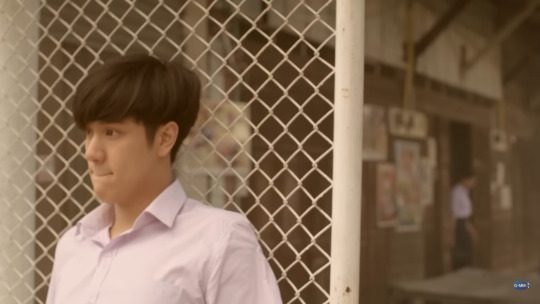
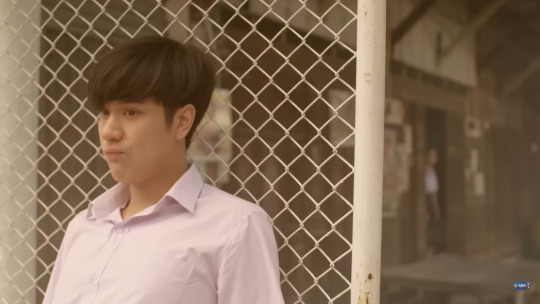
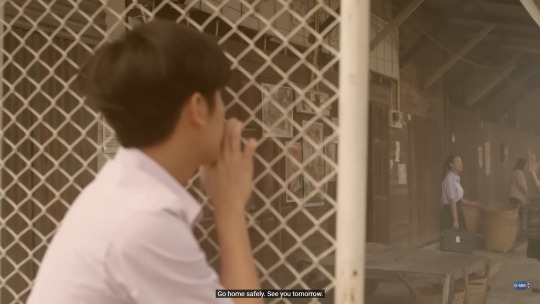
And look at that. That's pining personified and you cant even see his face. He is just THAAAT good.
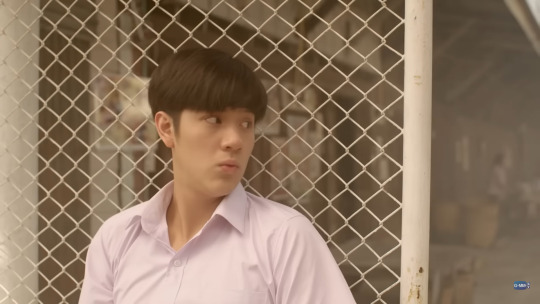
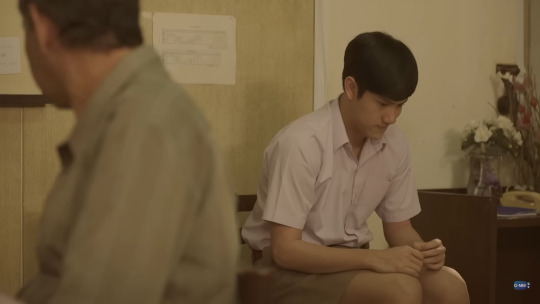
His body language, his micro-expressions, the delivery of dialogues, everything is just pure perfection.
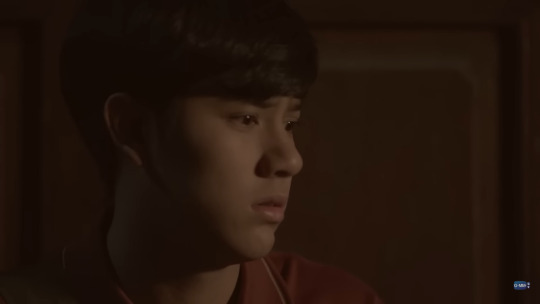
Look at him absolutely nail the look of a lost hurt child who doesn't know who or what to turn to. He really has no business being this good!?!
I was in a bad mood when i was watching that episode. But Nanon is just so good at his job that by sheer force of his acting brilliance he turned my mood around.
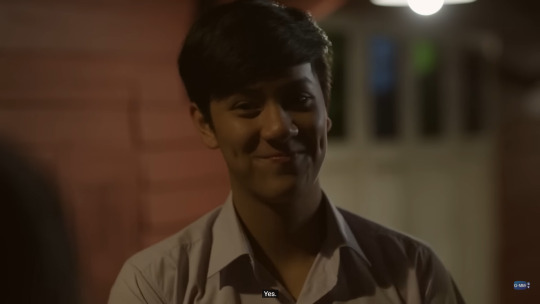
His dimples helped for sure. of course.

i mean LOOK AT THEM.

This scene was especially fantastic. Really fun to watch.
But i meant something much more intangible.

You know that feeling when you feel better just by seeing certain works of art, a painting or a sketch, or if you're looking at the sky, or listening to a piece of music, just knowing that such beauty exists in the world by itself enough to lift you up?
Watching Nanon do his thing in this episode felt more or less like that!
Especially this scene that took my breath away.

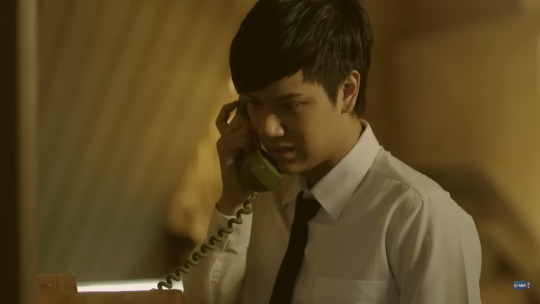
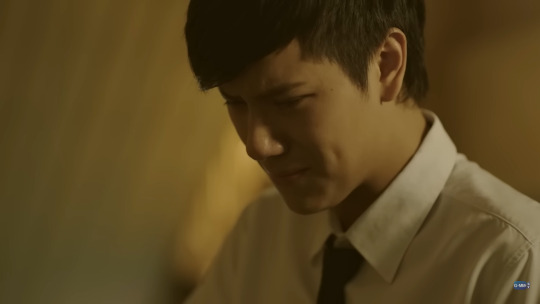
How was he just 20 when he did this??? it's so mind blowing!
I'll never not be beyond grateful that i decided to watch bad buddy, cos 1. it gave me patpran and 2. it gave me nanon! one of the finest actors i have seen in my entire life. EVER. And he's just 22? I really can't wait to see what all he does over the course of his acting career!
Episode 3 follows the adventures of Khaotung's character "Songpol". I loved his story the most out of all 5 of them. No surprises here. How it's about an adult closeted gay man decides to stop suppressing his identity and live out a life he had denied himself all along. How he has known that he was gay for decades but because he hid that part, he still remains a sorta baby gay at the age of 55, and how this time/body reversal situation gives him a second chance at a more free life.
And while there were fewer opportunities for moments of acting brilliance, he did amazingly well in whatever there was.

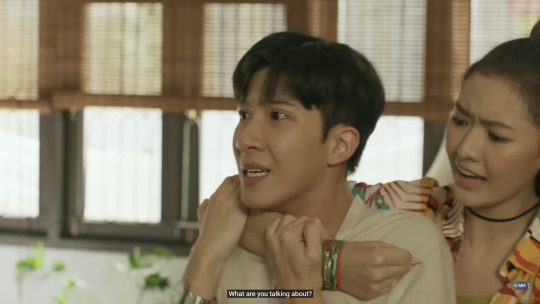

And more importantly there wasn't a single second where he was on screen where my heart wasn't brimming with affection.

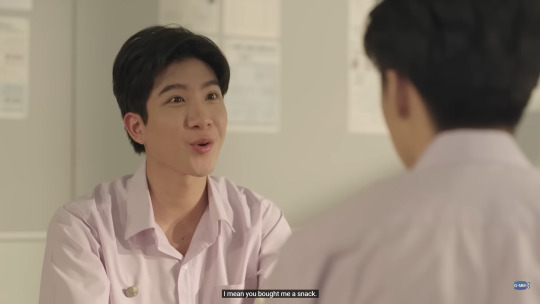


I especially am LOVING this gay uncle and supportive niece dynamic. We usually see it the other way around so loving this twist on the usual trope. Also khaotung does SO well in this scene where he is occupying his 15 yr old body but his facial expressions reveal the maturity of a 55 year old uncle of his niece who he is talking to.

Also LOVING the way he fanboys over "Jaya".
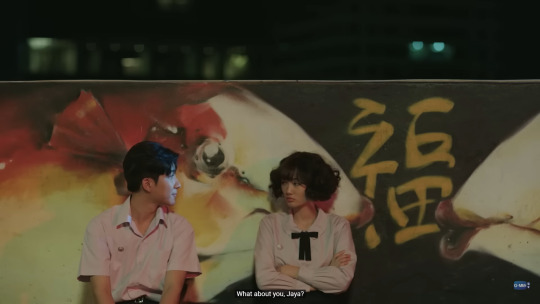
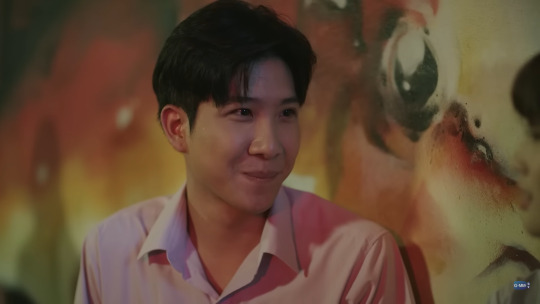
His devotion is so visible. It's unbelievably endearing. I would make a home for him in my pocket if i could.

Like that's MY baby. A whole cutie patootie.
And also he is SO so handsome i could just watch him just existing for hours.

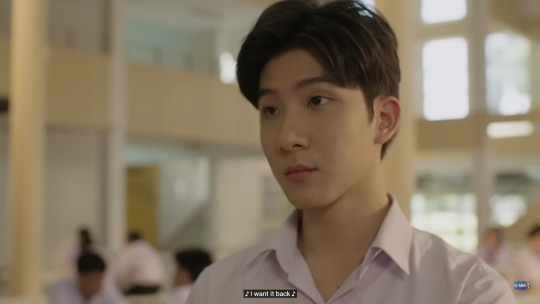
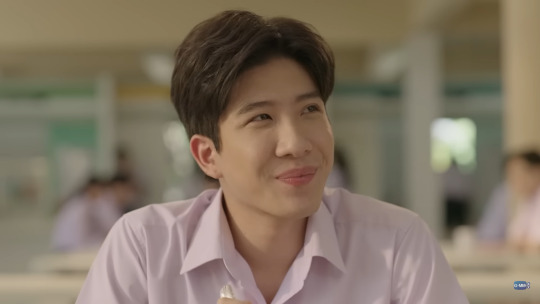
Gorgeousness🤌

I'm so excited for him to be living out his happy dream gay life. He deserves it so much. Pining for decades and then finally going to confess and then finding out he has found somebody else yet again, just next level of pain. He needs his happy ending. And he better be getting it. I am really looking forward to it.
What i'm not looking forward to is how the multiple love triangles the show has already set up is going to blow up in everyone's faces. It's such an annoying trope. But ANYTHING for a show featuring Nanon and Khao. And for the most parts i am LOVING this show, hopefully i will love it till the end :')
16 notes
·
View notes
Text
A visit to Mashbill Wine & Spirits on Avenue C
By Stacie Joy
I stopped by Mashbill Wine & Spirits on a recent Friday night, when the shop at 24 Avenue C between Second Street and Third Street hosts a wine and spirits tasting.
Owner Adi Pal, also the founder of online spirits merchant Mash & Grape, was behind the counter...
The space has been a liquor store for years. (Before Mashbill arrived in 2014, going first by Mash & Grape, the liquor store's clerks still worked behind bulletproof glass.)
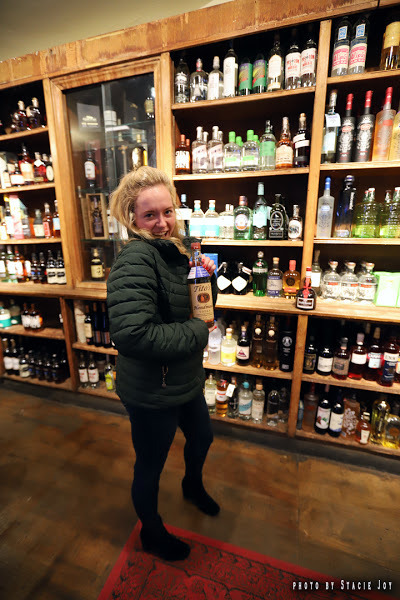
During my visit, I was impressed with the staff's personalized service, greeting customers and having their orders waiting for them. Mashbill fans also appreciate the shop's thorough stock of harder-to-find items... and the Threesomm Wine Club, a three-bottles-for-$45 deal.
Mashbill is also dog friendly (there's a treat jar for pups up front)...

---
Mashbill Wine & Spirits is at 24 Avenue C between Second Street and Third Street. The shop is open Monday through Thursday from 2 to 10 p.m.; until 11 p.m. on Friday. Weekend hours: Saturday 11 a.m. to 11 p.m., Sunday 11 a.m. to 9 p.m.
Previously on EV Grieve: A visit to the Tompkins Square Library branch on 10th Street
A visit to Bali Kitchen on 4th Street
A visit to Eat’s Khao Man Gai on 6th Street
A visit to Yoli Restaurant on 3rd Street
Preparing for Saturday's dinner at Il Posto Accanto on 2nd Street
A visit to the Streecha Ukrainian Kitchen on 7th Street
A trip to the recently expanded Lancelotti Housewares on Avenue A
A visit to C&B Cafe on 7th Street

Source: http://evgrieve.com/2018/12/a-visit-to-mashbill-wine-spirits-on.html
0 notes
Photo

Sanamluang in Claremont serves a phenomenal yet simple dish of khao man gai (chicken and rice) and I can't stop thinking about it. I appreciate you, Sanamluang. You won me over.
0 notes
Text
Impressions of the third episode of Moonlight Chicken:
1) It’s was the little things of this episode that carried me. Li Ming looking at the world around him while he was on the bike, after learning the diner would be sold. Looking at his world, mostly the old culture world, the seaside culture he grew up with. All after Li Ming said to Jim that he didn’t plan on inheriting the diner. Jim looking at the Work and Travel brochure. Change is being forced on everyone.
I liked this juxtaposition a lot because I think it connects to another theme that Aof may be hinting at: how, exactly, does historic culture survive in modern times? Ms. Hong suggests to the Marina project team that the area that contains Jim’s diner be turned into a historic market. Young people inherit the businesses that their parental generations operated, and, maybe, turn them into something of their own. (This reminds me of the story of Nom Wah Tea Parlor in New York Manhattan’s Chinatown, a restaurant that’s been operating for over 100 years. It was famously inherited by the third generation, a chef named Wilson Tang, who’s expanded the business while keeping the heart of the restaurant pumping.)
2) And besides the younger generations carrying historic culture with them -- as we see Gaipa committing to with his mom during the Loy Krathong festival, as they push flower baskets together in water -- we have to admit that change is really hard! Change is hard. Behavioral change is really hard. All of the guys who will be affected by the diner’s closure and demolition are in a head space. Jim’s navigating that with Wen, Wen is navigating his own double-layered guilt. He’s trying to assuage that guilt and figure out his purpose in life. Jim’s saying he’s not carrying anger at Wen, but Iiiiiii wanna see more background to that. These guys are all transitioning to a new phase of life, along with their actual physical locale, which may be radically differentiated outside of their own control. It’s unsettling.
3) I took notes on a couple more examples of the young folks carrying historical culture, and want to make sure I get them down quickly before I move on: I loved that Li Ming prayed, and encouraged Heart to pray, before launching their basket for Loy Krathong. I loved the visit to the shrine by Jim and Wen, and the recollection of memories of Jim and Beam (#jimbeam lol) at the temple. (Actually, I’d venture to say that engagement with spirituality vis à vis prayer is a trope to old culture that Aof is leaning on -- BUT, I don’t have nearly enough educational background in Thai Buddhism to say that for sure. I’ll welcome other commentary on that point!)
Also: Li Ming and Heart dancing after launching their basket. Oh my god. I REALLY LIKE THESE TWOOOOOO. I LOVED THAT THEY DANCED.
Li Ming is caught in the MIDDLE of old and new culture. He wants to move to the US to figure out his life. But so much of his life is rooted in Pattaya, and he shows Heart a little of that background when they’re together, alone. MEEP.
4) Gotta squee for a second: KHAO. IS. SO. GOOD. SO. GOOD! SO. GOOD. His acting is SOOO GOOOD. His little head shakes, GAH! I just want to wave my arms and push him and Earth together and just LEAVE THEM BE. I’d be fine with that! I’m bucking a trend. I’m okay with that! #earthkhao, a girl can dream.
5) I’m going against the fandom trend again! I am going to ENJOY JEALOUS ALAN. I’m going to ENJOY VILLAIN FIRST. He looks great as a jealous weenie. I’m EAGERLY waiting to see how First and Mix manage a complicated and crumbling relationship. I rub my hands together in GLEE.
The Khao Man Gai Appreciation Rating for episode three is at 🐔🐔: we didn’t get money shots of food for this episode (sad), but Jim donating KMG to the shrine warmed my heart.
*Quick request, if anyone out there is reading this and planning on doing this post: I’m curious if there’s any more significant background to Loy Krathong being in this episode and possibly connected with the title of the episode (”The Dream of the Eternal Moon.”) If anyone writes any analysis of this, I wonder if you could tag me so I don’t miss it. I just don’t know the history of this festival and all of the lunar connections. Thanks!
**EDITING TO ADD: Oooooh. Oooooh. Reading that Wikipedia article about Loy Krathong. I did NOT realize all the intersections between Buddhism and Hinduism in Thailand. I think I knew that Hinduism was one of the major religions of Thailand, but I’ve never given myself time to think or research about the intersections of Hinduism and Buddhism in Thai culture (I’ve always focused on Malaysia and Singapore in SE Asian cultures). Oooooh. Rabbithole!
#moonlight chicken#moonlight chicken meta#earth pirapat#mix sahaphap#earthmix#wen x jim#jim x wen#first kanaphan#khaotung thanawat#geminifourth#gemini norawit#fourth nattawat
28 notes
·
View notes
Text
Before this week’s Moonlight Chicken premiere (AAAAHHHHHH), I’m lifting up this post from December 2022 as reading homework for the family fandom -- a backgrounder on the “chicken” in Moonlight Chicken, otherwise known as khao man gai/Hainanese chicken rice! (It is pretty much one of my two or three FAVORITE DISHES of the Thai/Malay/Singaporean geographical expanse.)
I’m so deeply appreciative of the comments and reblogs that this post got, and I want to lift up some additional recipes that @telomeke (THANK YOU!) recommended by Flo Lum on YouTube. It’s great to watch the process in real time, and I totally encourage the fam to give this dish a try at home, especially if you’ve never had it before and/or don’t have a restaurant local to you to order it from. Like I wrote up there -- khao man gai SEEMS simple, but there’s a lot to it, and you’ll be so rewarded with comfort food that you’ll find yourself going back to time and time again.
Hainanese chicken rice -- long recipe Hainanese chicken rice -- faster recipe Hainanese chicken rice -- pressure cooker recipe (looks like Flo Lum likes to use the Instant Pot a lot, rad) Malaysian roast chicken rice with ginger scallion sauce -- so I’m linking this, per @telomeke‘s recommendation, to show how Flo makes ginger scallion sauce, which is a common condiment that accompanies khao man gai. But ALSO, omg, give this entire roast chicken rice recipe a try, because this is another one of my major fave dishes from Malaysia! (Also, side note, guh, I LOVE these recipes where you use hot scalding oil to make a sauce -- you can make some recipes for chili crisp this way, too. YUM, DROOLING.)
ANYWAY FRIENDS: this is a huge week. Moonlight Chicken premiering, other beloved shows ending. Make some chicken rice, fill your belly, be happy. I myself will be intrigued as to how the characters in the show deal with Earth’s character WANTING to run a khao man gai joint -- from the trailer, it seems that it’s something his community puts down. But frankly, if he’s a master of this dish, then I say, let the man do his thang, because this stuff is complicated. Let us all WISH for many, many sensual shots of the exquisite cast khao man gai throughout the show -- if I see khao man gai gifsets, I will literally shed real tears!
Alright, happy Monday! As previously promised during my review of A Tale of Thousand Stars: in preparation for the eventual release of Moonlight Chicken, I would love to share in a long manifesto my love, my passion, the GOSPEL, for what I think may be the unsung hero and character of that show, without even seeing an episode – the actual dish of Hainanese chicken rice itself, which is known as khao man gai in Thailand.
(LONG POST! TL;DR: this post is going to contain a quick explanation of why it is SO BOMB that there’s a THAI BL that focuses ON THIS DISH, a description of the dish itself, a diasporic history of Hainanese chicken rice, links to a few recipes, and a list of places where I’ve had Hainanese chicken rice in the States.)
Borrowing a photo from Mark Wiens! Let’s get started.

Girl, why exactly are you going off on all this?
Why, oh why, you may ask – why should Mama Turtles wax POETIC about the seemingly simple dish of chicken rice? The simple name of the dish belies a deeply cultural symbol of so much – of the roles that particular dishes play in Southeast Asian cultures, of how such a dish can be so difficult to make AND to relate to, and at least most importantly to me, how immigration and diasporas created the complicated and diverse foodways and cultural fabrics that we see in this part of the world.
(For the record, I’m part Malaysian, and have spent significant time of my adult life in Malaysia and Singapore. While these areas are not Thailand specifically, there’s tons of shared food preparation, culture, and appreciation from Thailand, down south to Penang and the Malay Peninsula, and down to Singapore.)
Why is khao man gai such a big deal vis à vis Moonlight Chicken?
Before I talk about the details of the dish itself, I want to set the context of why is it SO MOTHERBLEEPING LOVELY that there’s a Thai BL (with our DARLING Earth and Mix starring in it, with the DARLING First and Khao in supporting roles) that is ostensibly centered on a man making khao man gai. This is deeply heart-warming, soul-settling, feel-good shiz to me, and I think that a lot of Thai BL fujoshis who are obsessed with food, like me, would feel the same way.
Hainanese chicken rice/khao man gai is made of the most humble of ingredients – chicken, rice, water, salt.
The fact that there would be a queer series centered around a queer man making khao man gai and selling it to others – it means that a dish that is totally, utterly accessible to EVERY SINGLE PERSON in a country is being centered in a show focused on queer relationships….the kinds of relationships that should also be accessible to EVERY SINGLE PERSON who wants this kind of a relationship in an Asian country.
This will make even more sense as I continue writing about the dish, but suffice to say, while it’s complicated to make, Hainanese chicken rice is about the most egalitarian food there is – and the freedom to love whoever you want should also be as egalitarian as that.
What is Hainanese chicken rice/khao man gai, and what is the big bleeping deal about it?
Before I jump to Wikipedia, maybe I should have Earth himself explain the dish.
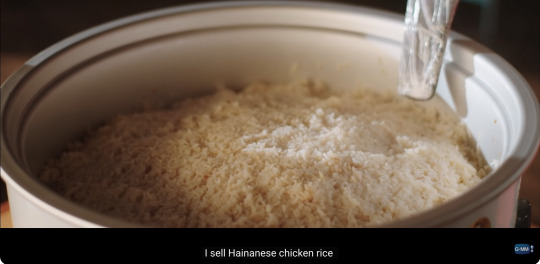
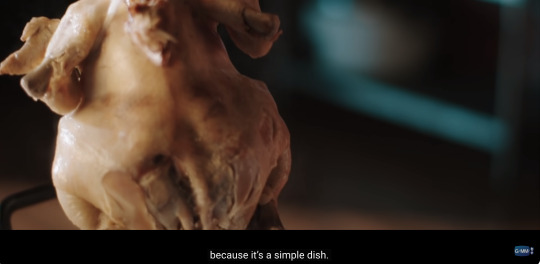

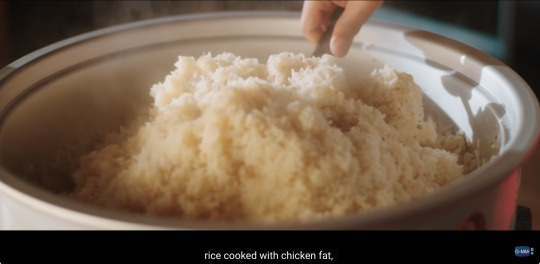
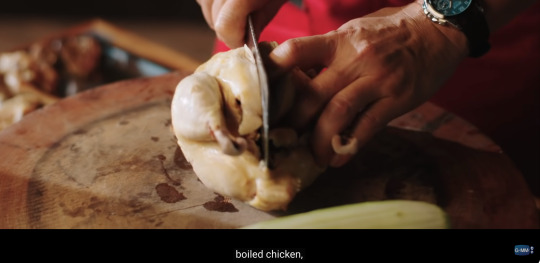
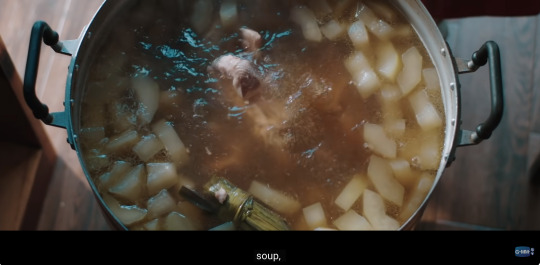
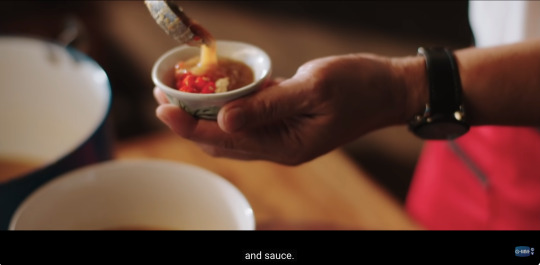

That last screenshot is truth.
Obviously, the easiest place to find a background on this dish is Wikipedia, and what I actually didn’t know before starting to type this up is that khao man gai literally means “chicken oily rice,” which totally sums up this dish. While it seems simple, it’s a very rich and filling dish, but also healthy-ish, because you’re still eating chicken, which is not the richest or fattiest of meats.
The dish consists of rice that’s first been sautéed with aromatics like ginger and garlic, and (in many, but not all cases) also sautéed with rendered chicken fat. (If you’re from the East Coast of the States or are part of a Jewish community, you’ll know this ingredient as schmaltz.)
That fatty sautéed rice is then steamed in chicken broth, ideally in chicken broth that you yourself made while you were boiling the chicken that you’ll use in your khao man gai. As far as that chicken goes, you’ve cleaned it, prepped it, maybe you rubbed salt on it to get rid of any impurities on the skin, and boiled it until it’s cooked, but not overcooked. If you’re in Thailand, you might just let it cool; if you’re in Malaysia or Singapore, or elsewhere in Asia, you might give that baby a dip in ice water after it’s done cooking, to tighten up the skin and give the skin a jellied texture that is beloved by many. You also might rub some sesame oil on your chicken after the boiling process, which is done in some, but not all, places.
You also might go wild and serve your rice not just with the boiled chicken, but also with roasted chicken, or fried chicken, or a combo of boiled/roasted/fried chicken. You ALSO might WILD OUT MORE and ALSO serve your chicken rice with, say, crispy siu yuk, which I’ve had, and like…. ooooommmmfffffgggg. It sends shivers down my spine, it’s so good.
You’ve also made the broth perfectly with aromatics, and possibly simmered either daikon or winter melon in the broth to serve alongside the composed dish of chicken and rice.
AND, you definitely best have made some side sauces. Garlic-ginger-vinegar sauce, maybe, or ginger-scallion oil, or red chili sauce, or all of them. In Thailand, a sauce that features taucu, or fermented yellow soybeans, seems to be an absolute must – and it is goddamn pure heaven to put on your khao man gai. If you’re in Malaysia, a small dish of vinegared chili, known as chili padi, is a must must. Depending on where you’re eating this in Asia, you’ll put a bottle of dark soy sauce on the table for drizzling over all your rice, but – you might not always see that at every place where you’re eating chicken rice.
In OTHER WORDS: this dish is a bit of a beast to make. The simple LOOK of the dish – white chicken on top of white rice, with some sliced cucumbers to the side, and a bowl of broth next to it – is totally disingenuous to the work you need to put in to make it taste great. Your broth, for instance, might be made by boiling chicken after chicken after chicken in it. That broth gets more concentrated and powerful over time as you’re putting in more and more aromatics in it. Your store is defined by your broth; by how perfectly each grain of rice is individually coated in a sheen of chicken fat, salt, and other seasonings; by your one-of-a-kind sauces that hit and accompany the chicken and the rice perfectly, and most importantly, by how all these components come together. If your soup, chicken, rice, and sauces are ALL PERFECTLY MADE, then you’ve hit paydirt, my friends.
It’s VERY RARE to find a shop that does all these components perfectly, or at least at the same level of tastiness.
Alright, so I get that this dish can be a motherfucker to make. But why is it such a big deal, culturally? Why would a Thai BL be focused on a guy making this dish?
So for this part, I first want to say that I think it’s very important for a Western audience to understand that this dish is deeply loved in MANY countries in Asia and Southeast Asia. I’ve eaten this dish with groups of Westerners in SE Asia – actually exclusively white folks, now that I think about it – and to a tee, I’ve heard complaints by them that this dish is boring and they can’t see what the big deal is about it.
I mean, American pork chops can be fine, or they can be boring, too.
The fact that chicken rice spans multiple countries and foodways should tell a Western audience that there are qualities about it, as I listed above, that are far beyond the sum of its parts. For instance – the way to get each GRAIN of rice coated in fat and flavor takes years of experience. Y’all, I still can’t get perfect rice in my rice cooker, and I’ve been making rice for my family for more than 10 years. These things take time to perfect, and not everything one eats in Asia is going to be bombastic, like, say, Taiwanese stinky tofu or a gorgeous omakase at a high-end sushi bar.
Part of the reason why this dish is so beloved is because it IS very ubiquitous from the China-to-Southeast-Asia diaspora. I can mostly speak for Malaysia (I apologize for not knowing more about immigration patterns in Thailand), but MUCH of the fabric of Malaysian cuisine comes from specifically regional immigrant diasporas, namely from the area of China that is now known as Fujian, but that’s not a hard and fast historical rule. Well-known populations from this area in China that settled in Malaysia include the Hakka and Hokkien populations (you may have seen Hakka mee or Hokkien mee on Malaysian restaurant menus), and they also include the Hainanese population, which brought a style of boiling chicken in broth to the areas where the population settled – which include Thailand and Malaysia, and eventually Singapore, as Hainanese descendants moved farther south down the Malay peninsula.
(By the way, if you’re ever curious, you need to read up on populations that were literally created after the first waves of Chinese immigration to Southeast Asia. The well-known Peranakan population in Malaysia, for instance, was literally created through interracial marriage of Chinese immigrants to native Malay populations, and a deeply important culture, including foodways, were born out of those marriages and population growth. It’s fascinating history in a world that often seems so hyperfocused on far right movements wanting “racial purity.” What cultural beauty comes out of populations and diasporas meeting each other and creating new cultures together.)
Back to the discussion: as Malaysian cultures and populations developed over time due in part to the influence of Chinese immigration through Southeast Asia, so, we assume, the same was happening in Thailand. (We can see deeply the effect of the influence of Chinese culture in a show like Big Dragon, which was centered around the telling of Chinese Buddhist myths through a Thai lens.) And as these immigrant populations from China traversed the Thai-Malay peninsula, their food habits stuck and were adopted by the native Southeast Asian populations. It’s no wonder that chicken rice became as beloved and ubiquitous as it did – in part because rice is a staple food across the whole region, in part because it’s such a comforting dish (like congee, like juk, like okayu porridge), and in part because the individual ingredients themselves are humble and easy to find for your everyday home cook.
I want to just quickly touch upon the point of rice as a staple food. It seems so super obvious to us Asians, but especially for fans of QL that may not be Asian and/or may not have rice as a central and everyday food – to make a dish like chicken rice perfectly, to have it center on the particular way in which you PREP and COOK the rice, for the rice to be all oily and salty and chicken-y – the dichotomy of how humble rice is with how GLORIOUSLY TASTY and filling the final result of chicken rice is, can really move you. There are thousands of other rice preparations out there that are just as beloved as chicken rice – from the Malaysian nasi lemak (literally “fat rice,” or rice cooked in coconut milk and served with delicious accompaniments) to Indian biriyani, to Japanese takikomi gohan or tamago kake gohan, to Korean bibimbap or gyeran bap – you get the point. Dishes that center on rice are just beloved. They just are, because rice is so fundamentally egalitarian and important to our everyday way of being and eating.
AND, the way in which you EAT chicken rice – by mixing up the accompaniments throughout the eating process, dolling up each bite of rice with a different sauce, having a sip of soup, taking a bit of meat – that whole process of making each bite taste different allows you to have a whirlwind experience of eating with, again, very humble ingredients that end up being far more than the sum of their rice-meat-and-veg parts.
And so. When Chinese populations were immigrating throughout Southeast Asia, they brought with them, and adapted over time, a style of making rice with chicken and fat that, again, seemed so simple, but was so full of a kind of quiet and comforting flavor, that it HAD to be adapted by every country and population in which the Chinese immigrants had settled. The love for rice in the whole region was going to lead to a guaranteed adaptation of this dish for generations to cook and enjoy.
Finally, regarding Moonlight Chicken once more – without having seen an episode yet, I want to offer some conjecture that I think (or hope) that the plot reflects the simple-but-complicated nature of the dish of khao man gai with whatever happens in the love triangles of Earth, Mix, First, and Khao. There might very well be love parallels that what seems to be simple is actually a beast to make, both in food and in relationships.
And regarding a cultural love for rice dishes, and the fact that this dish and a khao man gai establishment is at the heart of this show: it fills me up with so much comforting happiness that a khao man gai joint is what’s being used to center a theme of where people go to kick off the show. If you know of a great khao man gai joint – you go to it, people flock to it. The trailer shows drunk people stumbling around. If you’re drunk and hungry, you want to go to a place that gives you comfort, right? That might be a McDonald’s, a taco truck, a diner, a 24-hour Korean restaurant (ugh, anju at 2 am while you’re nursing your eventual hangover…memories).
Khao man gai IS COMFORT, and IS comfort food. Earth’s character providing that comfort…I’m just saying, there HAS to be parallels between khao man gai and the storyline of Moonlight Chicken. THERE MUST BE. Let a girl dream!
Damn, girl. You went OFF. Take some Altoids. Give us some recipes!
Yes, this is definitely a manifesto of manifestos of an amazing dish.
These recipes mark the cultural landscape of this dish. I’ll note where the recipe comes from. I encourage you to review these recipes and check out the small-and-large differences in how this dish is made, depending on where in Asia the recipe is centered. (For instance, many of these recipes call for that ice bath that I mentioned earlier; that’s not ubiquitous in Thailand.)
Also, I want to note that as far as the side soup goes, I’ve only seen that Thai preparations of khao man gai GUARANTEE the soup on the side. I’ve seen some places in Singapore offer the side soup, but not all. The addition of daikon or winter melon to the soup, in Thai preparations, gives me the shivers, it is so good. So if/when you’re making this at home, keep in mind that you can choose to serve the broth/soup on the side.
Two last notes – this coming from me, a mom and busy home cook. I sometimes do a very bastardized version of this dish for my kids, where I poach chicken in aromatics, but I don’t sauté the rice beforehand – I just chuck the rice in my rice cooker with my poaching liquid. When I do this, I always freeze a half-quart to a quart of broth. Then, when I make the dish again, I take out that frozen broth, add it to my pot with my new chicken and water, and start poaching again. Having that base of previous broth really DOES help make my future chicken and soups taste that much richer.
AND – while I have daikon available in my supermarket (thank you, big cities!), I often use turnips as the veg that I serve with the broth. I LOVE turnips in soup, y’all! Turnips in chicken soup are oniony without being overwhelming, and I love how translucent and creamy they get. They totally hold the flavor of broth beautifully. Next time you’re making soup, don’t leave the turnips behind, they’re great! (Oh, and also, a tip I learned from the Kinou Nani Tabeta mangas – I also use leeks as an aromatic in my soup, along with garlic and ginger. Leeks are AMAZING in soup! They can help take away any gaminess you might get from poaching chicken or other meat.)
Okay, recipes!
The Woks of Life (China)
Food 52 (Thailand)
Mark Wiens (Thailand)
Rasa Malaysia (Malaysia)
Adam Liaw (Singapore-ish recipe, note the use of sesame oil for rubbing on the chicken after the ice bath – not all recipes call for this)
Kwokspots (maybe we can call this a ubiquitously Asian recipe? I actually just love this dude on IG, I’m gonna hype up his recipe)
Um, this is a lot. Where can I order this dish?
In my post about A Tale of Thousand Stars, I referenced Eim Khao Man Gai in Elmhurst, Queens, NY (see footnote below). I unfortunately only know places to eat Hainanese chicken rice/khao man gai in either NY or SoCal, but I ENCOURAGE you to please seek it out wherever you live.
Over the years, even while I’ve lived thousands of miles away from New York, Eim Khao Man Gai is my restaurant par excellence for khao man gai. It’s all they serve, and they do it SO well. Eim Khao Man Gai also does their chicken three ways – steamed, roasted, and/or crispy. You guys, it’s just heavenly, and their side sauces are to die for.
In SoCal, Savoy Kitchen was the first place I heard of that specialized in chicken rice, and it’s incredible here. As well, I love Side Chick at the Westfield Santa Anita mall in Arcadia. I’ve eaten a bunch at Ipoh Kopitiam in Alhambra, but I haven’t tried their Singapore-style Hainan chicken rice yet – it looks amazing, and many reviews say that it’s currently best version in the San Gabriel Valley.
Back to New York for a second – if you’re looking for a place more local to you that isn’t in Queens, just look at Yelp. If I lived in NYC now, I would be in tears with how much more available this dish has gotten over the years.
Wherever you are in the States – the Bay Area, Texas, anywhere where there are significant Asian populations – or wherever you are in the world, please seek out Hainanese chicken rice/khao man gai. Again, it may not LOOK exciting on the menu. But you’ll get a taste for the kind of comfort food that really hits home for so many of us Asians.
Holy shit. You must be exhausted!
WOW WOW WOW, y’all. If you’ve gotten THIS FAR – bless you! Thanks for going on this road with me. Please make, buy, and/or eat Hainanese chicken rice/khao man gai. Appreciate the differences of the dish from each of the cultures that you’re eating it from. Please give big hugs to GMMTV for focusing a BL on this most humble, beautiful, delicious, soul-satisfying dish. I’m hoping for all the food/love parallels. I’m dying to see Mix just snarf on a big plate of khao man gai to kick the series off.
Moonlight Chicken is gonna be SO GREAT! And chicken rice is just the best dish ever. Please enjoy it!
* * *
If you have the energy to read a little further, one more urge from your devoted food mom here. @secretsfromwholecloth noted in a comment on my ATOTS review that ae and aer friend had actually hit up Eim Khao Man Gai, which was SO RAD to read. If you have never visited NYC before, and you’re plotting your itinerary of the usual tourist stops – I beg you to please save at least an afternoon to hop on the 7 train and head out to Queens. Queens has some of THE BEST RESTAURANTS in NYC. From Indian and Tibetan in Jackson Heights, to Thai and Filipino food in Elmhurst and Woodside, to Greek in Astoria, to Korean in Bayside and Flushing, and the monolith that is Flushing’s Chinatown – Queens is the happiest and fucking coolest diverse place in the world. Don’t be afraid to leave Manhattan for an afternoon or even a whole day. Eat everything during the day, hit up Flushing Meadows Corona Park for some exercise, check out the Queens Museum and the awesome Noguchi Museum, unwind at a cocktail bar in Long Island City or Sunnyside at night. Queens is totally the unsung best borough in NYC, one of the most diverse counties in the States, and I’ll stand up for Queens County every minute of my life over Manhattan.
#moonlight chicken#earth pirapat#mix sahaphap#khao man gai#hainanese chicken rice#cooking#thai cooking#malaysian cooking#singaporean cooking#hainan#foodways and diasporas#chinese diaspora
182 notes
·
View notes
Text
Alright, happy Monday! As previously promised during my review of A Tale of Thousand Stars: in preparation for the eventual release of Moonlight Chicken, I would love to share in a long manifesto my love, my passion, the GOSPEL, for what I think may be the unsung hero and character of that show, without even seeing an episode -- the actual dish of Hainanese chicken rice itself, which is known as khao man gai in Thailand.
(LONG POST! TL;DR: this post is going to contain a quick explanation of why it is SO BOMB that there’s a THAI BL that focuses ON THIS DISH, a description of the dish itself, a diasporic history of Hainanese chicken rice, links to a few recipes, and a list of places where I’ve had Hainanese chicken rice in the States.)
Borrowing a photo from Mark Wiens! Let’s get started.

Girl, why exactly are you going off on all this?
Why, oh why, you may ask -- why should Mama Turtles wax POETIC about the seemingly simple dish of chicken rice? The simple name of the dish belies a deeply cultural symbol of so much -- of the roles that particular dishes play in Southeast Asian cultures, of how such a dish can be so difficult to make AND to relate to, and at least most importantly to me, how immigration and diasporas created the complicated and diverse foodways and cultural fabrics that we see in this part of the world.
(For the record, I’m part Malaysian, and have spent significant time of my adult life in Malaysia and Singapore. While these areas are not Thailand specifically, there’s tons of shared food preparation, culture, and appreciation from Thailand, down south to Penang and the Malay Peninsula, and down to Singapore.)
Why is khao man gai such a big deal vis à vis Moonlight Chicken?
Before I talk about the details of the dish itself, I want to set the context of why is it SO MOTHERBLEEPING LOVELY that there’s a Thai BL (with our DARLING Earth and Mix starring in it, with the DARLING First and Khao in supporting roles) that is ostensibly centered on a man making khao man gai. This is deeply heart-warming, soul-settling, feel-good shiz to me, and I think that a lot of Thai BL fujoshis who are obsessed with food, like me, would feel the same way.
Hainanese chicken rice/khao man gai is made of the most humble of ingredients -- chicken, rice, water, salt.
The fact that there would be a queer series centered around a queer man making khao man gai and selling it to others -- it means that a dish that is totally, utterly accessible to EVERY SINGLE PERSON in a country is being centered in a show focused on queer relationships....the kinds of relationships that should also be accessible to EVERY SINGLE PERSON who wants this kind of a relationship in an Asian country.
This will make even more sense as I continue writing about the dish, but suffice to say, while it’s complicated to make, Hainanese chicken rice is about the most egalitarian food there is -- and the freedom to love whoever you want should also be as egalitarian as that.
What is Hainanese chicken rice/khao man gai, and what is the big bleeping deal about it?
Before I jump to Wikipedia, maybe I should have Earth himself explain the dish.








That last screenshot is truth.
Obviously, the easiest place to find a background on this dish is Wikipedia, and what I actually didn’t know before starting to type this up is that khao man gai literally means “chicken oily rice,” which totally sums up this dish. While it seems simple, it’s a very rich and filling dish, but also healthy-ish, because you’re still eating chicken, which is not the richest or fattiest of meats.
The dish consists of rice that’s first been sautéed with aromatics like ginger and garlic, and (in many, but not all cases) also sautéed with rendered chicken fat. (If you’re from the East Coast of the States or are part of a Jewish community, you’ll know this ingredient as schmaltz.)
That fatty sautéed rice is then steamed in chicken broth, ideally in chicken broth that you yourself made while you were boiling the chicken that you’ll use in your khao man gai. As far as that chicken goes, you’ve cleaned it, prepped it, maybe you rubbed salt on it to get rid of any impurities on the skin, and boiled it until it’s cooked, but not overcooked. If you’re in Thailand, you might just let it cool; if you’re in Malaysia or Singapore, or elsewhere in Asia, you might give that baby a dip in ice water after it’s done cooking, to tighten up the skin and give the skin a jellied texture that is beloved by many. You also might rub some sesame oil on your chicken after the boiling process, which is done in some, but not all, places.
You also might go wild and serve your rice not just with the boiled chicken, but also with roasted chicken, or fried chicken, or a combo of boiled/roasted/fried chicken. You ALSO might WILD OUT MORE and ALSO serve your chicken rice with, say, crispy siu yuk, which I’ve had, and like.... ooooommmmfffffgggg. It sends shivers down my spine, it’s so good.
You’ve also made the broth perfectly with aromatics, and possibly simmered either daikon or winter melon in the broth to serve alongside the composed dish of chicken and rice.
AND, you definitely best have made some side sauces. Garlic-ginger-vinegar sauce, maybe, or ginger-scallion oil, or red chili sauce, or all of them. In Thailand, a sauce that features taucu, or fermented yellow soybeans, seems to be an absolute must -- and it is goddamn pure heaven to put on your khao man gai. If you’re in Malaysia, a small dish of vinegared chili, known as chili padi, is a must must. Depending on where you’re eating this in Asia, you’ll put a bottle of dark soy sauce on the table for drizzling over all your rice, but -- you might not always see that at every place where you’re eating chicken rice.
In OTHER WORDS: this dish is a bit of a beast to make. The simple LOOK of the dish -- white chicken on top of white rice, with some sliced cucumbers to the side, and a bowl of broth next to it -- is totally disingenuous to the work you need to put in to make it taste great. Your broth, for instance, might be made by boiling chicken after chicken after chicken in it. That broth gets more concentrated and powerful over time as you’re putting in more and more aromatics in it. Your store is defined by your broth; by how perfectly each grain of rice is individually coated in a sheen of chicken fat, salt, and other seasonings; by your one-of-a-kind sauces that hit and accompany the chicken and the rice perfectly, and most importantly, by how all these components come together. If your soup, chicken, rice, and sauces are ALL PERFECTLY MADE, then you’ve hit paydirt, my friends.
It’s VERY RARE to find a shop that does all these components perfectly, or at least at the same level of tastiness.
Alright, so I get that this dish can be a motherfucker to make. But why is it such a big deal, culturally? Why would a Thai BL be focused on a guy making this dish?
So for this part, I first want to say that I think it’s very important for a Western audience to understand that this dish is deeply loved in MANY countries in Asia and Southeast Asia. I’ve eaten this dish with groups of Westerners in SE Asia -- actually exclusively white folks, now that I think about it -- and to a tee, I’ve heard complaints by them that this dish is boring and they can’t see what the big deal is about it.
I mean, American pork chops can be fine, or they can be boring, too.
The fact that chicken rice spans multiple countries and foodways should tell a Western audience that there are qualities about it, as I listed above, that are far beyond the sum of its parts. For instance -- the way to get each GRAIN of rice coated in fat and flavor takes years of experience. Y’all, I still can’t get perfect rice in my rice cooker, and I’ve been making rice for my family for more than 10 years. These things take time to perfect, and not everything one eats in Asia is going to be bombastic, like, say, Taiwanese stinky tofu or a gorgeous omakase at a high-end sushi bar.
Part of the reason why this dish is so beloved is because it IS very ubiquitous from the China-to-Southeast-Asia diaspora. I can mostly speak for Malaysia (I apologize for not knowing more about immigration patterns in Thailand), but MUCH of the fabric of Malaysian cuisine comes from specifically regional immigrant diasporas, namely from the area of China that is now known as Fujian, but that’s not a hard and fast historical rule. Well-known populations from this area in China that settled in Malaysia include the Hakka and Hokkien populations (you may have seen Hakka mee or Hokkien mee on Malaysian restaurant menus), and they also include the Hainanese population, which brought a style of boiling chicken in broth to the areas where the population settled -- which include Thailand and Malaysia, and eventually Singapore, as Hainanese descendants moved farther south down the Malay peninsula.
(By the way, if you’re ever curious, you need to read up on populations that were literally created after the first waves of Chinese immigration to Southeast Asia. The well-known Peranakan population in Malaysia, for instance, was literally created through interracial marriage of Chinese immigrants to native Malay populations, and a deeply important culture, including foodways, were born out of those marriages and population growth. It’s fascinating history in a world that often seems so hyperfocused on far right movements wanting “racial purity.” What cultural beauty comes out of populations and diasporas meeting each other and creating new cultures together.)
Back to the discussion: as Malaysian cultures and populations developed over time due in part to the influence of Chinese immigration through Southeast Asia, so, we assume, the same was happening in Thailand. (We can see deeply the effect of the influence of Chinese culture in a show like Big Dragon, which was centered around the telling of Chinese Buddhist myths through a Thai lens.) And as these immigrant populations from China traversed the Thai-Malay peninsula, their food habits stuck and were adopted by the native Southeast Asian populations. It’s no wonder that chicken rice became as beloved and ubiquitous as it did -- in part because rice is a staple food across the whole region, in part because it’s such a comforting dish (like congee, like juk, like okayu porridge), and in part because the individual ingredients themselves are humble and easy to find for your everyday home cook.
I want to just quickly touch upon the point of rice as a staple food. It seems so super obvious to us Asians, but especially for fans of QL that may not be Asian and/or may not have rice as a central and everyday food -- to make a dish like chicken rice perfectly, to have it center on the particular way in which you PREP and COOK the rice, for the rice to be all oily and salty and chicken-y -- the dichotomy of how humble rice is with how GLORIOUSLY TASTY and filling the final result of chicken rice is, can really move you. There are thousands of other rice preparations out there that are just as beloved as chicken rice -- from the Malaysian nasi lemak (literally “fat rice,” or rice cooked in coconut milk and served with delicious accompaniments) to Indian biriyani, to Japanese takikomi gohan or tamago kake gohan, to Korean bibimbap or gyeran bap -- you get the point. Dishes that center on rice are just beloved. They just are, because rice is so fundamentally egalitarian and important to our everyday way of being and eating.
AND, the way in which you EAT chicken rice -- by mixing up the accompaniments throughout the eating process, dolling up each bite of rice with a different sauce, having a sip of soup, taking a bit of meat -- that whole process of making each bite taste different allows you to have a whirlwind experience of eating with, again, very humble ingredients that end up being far more than the sum of their rice-meat-and-veg parts.
And so. When Chinese populations were immigrating throughout Southeast Asia, they brought with them, and adapted over time, a style of making rice with chicken and fat that, again, seemed so simple, but was so full of a kind of quiet and comforting flavor, that it HAD to be adapted by every country and population in which the Chinese immigrants had settled. The love for rice in the whole region was going to lead to a guaranteed adaptation of this dish for generations to cook and enjoy.
Finally, regarding Moonlight Chicken once more -- without having seen an episode yet, I want to offer some conjecture that I think (or hope) that the plot reflects the simple-but-complicated nature of the dish of khao man gai with whatever happens in the love triangles of Earth, Mix, First, and Khao. There might very well be love parallels that what seems to be simple is actually a beast to make, both in food and in relationships.
And regarding a cultural love for rice dishes, and the fact that this dish and a khao man gai establishment is at the heart of this show: it fills me up with so much comforting happiness that a khao man gai joint is what’s being used to center a theme of where people go to kick off the show. If you know of a great khao man gai joint -- you go to it, people flock to it. The trailer shows drunk people stumbling around. If you’re drunk and hungry, you want to go to a place that gives you comfort, right? That might be a McDonald’s, a taco truck, a diner, a 24-hour Korean restaurant (ugh, anju at 2 am while you’re nursing your eventual hangover...memories).
Khao man gai IS COMFORT, and IS comfort food. Earth’s character providing that comfort...I’m just saying, there HAS to be parallels between khao man gai and the storyline of Moonlight Chicken. THERE MUST BE. Let a girl dream!
Damn, girl. You went OFF. Take some Altoids. Give us some recipes!
Yes, this is definitely a manifesto of manifestos of an amazing dish.
These recipes mark the cultural landscape of this dish. I’ll note where the recipe comes from. I encourage you to review these recipes and check out the small-and-large differences in how this dish is made, depending on where in Asia the recipe is centered. (For instance, many of these recipes call for that ice bath that I mentioned earlier; that’s not ubiquitous in Thailand.)
Also, I want to note that as far as the side soup goes, I’ve only seen that Thai preparations of khao man gai GUARANTEE the soup on the side. I’ve seen some places in Singapore offer the side soup, but not all. The addition of daikon or winter melon to the soup, in Thai preparations, gives me the shivers, it is so good. So if/when you’re making this at home, keep in mind that you can choose to serve the broth/soup on the side.
Two last notes -- this coming from me, a mom and busy home cook. I sometimes do a very bastardized version of this dish for my kids, where I poach chicken in aromatics, but I don’t sauté the rice beforehand -- I just chuck the rice in my rice cooker with my poaching liquid. When I do this, I always freeze a half-quart to a quart of broth. Then, when I make the dish again, I take out that frozen broth, add it to my pot with my new chicken and water, and start poaching again. Having that base of previous broth really DOES help make my future chicken and soups taste that much richer.
AND -- while I have daikon available in my supermarket (thank you, big cities!), I often use turnips as the veg that I serve with the broth. I LOVE turnips in soup, y’all! Turnips in chicken soup are oniony without being overwhelming, and I love how translucent and creamy they get. They totally hold the flavor of broth beautifully. Next time you’re making soup, don’t leave the turnips behind, they’re great! (Oh, and also, a tip I learned from the Kinou Nani Tabeta mangas -- I also use leeks as an aromatic in my soup, along with garlic and ginger. Leeks are AMAZING in soup! They can help take away any gaminess you might get from poaching chicken or other meat.)
Okay, recipes!
The Woks of Life (China)
Food 52 (Thailand)
Mark Wiens (Thailand)
Rasa Malaysia (Malaysia)
Adam Liaw (Singapore-ish recipe, note the use of sesame oil for rubbing on the chicken after the ice bath -- not all recipes call for this)
Kwokspots (maybe we can call this a ubiquitously Asian recipe? I actually just love this dude on IG, I’m gonna hype up his recipe)
Um, this is a lot. Where can I order this dish?
In my post about A Tale of Thousand Stars, I referenced Eim Khao Man Gai in Elmhurst, Queens, NY (see footnote below). I unfortunately only know places to eat Hainanese chicken rice/khao man gai in either NY or SoCal, but I ENCOURAGE you to please seek it out wherever you live.
Over the years, even while I’ve lived thousands of miles away from New York, Eim Khao Man Gai is my restaurant par excellence for khao man gai. It’s all they serve, and they do it SO well. Eim Khao Man Gai also does their chicken three ways -- steamed, roasted, and/or crispy. You guys, it’s just heavenly, and their side sauces are to die for.
In SoCal, Savoy Kitchen was the first place I heard of that specialized in chicken rice, and it’s incredible here. As well, I love Side Chick at the Westfield Santa Anita mall in Arcadia. I’ve eaten a bunch at Ipoh Kopitiam in Alhambra, but I haven’t tried their Singapore-style Hainan chicken rice yet -- it looks amazing, and many reviews say that it’s currently best version in the San Gabriel Valley.
Back to New York for a second -- if you’re looking for a place more local to you that isn’t in Queens, just look at Yelp. If I lived in NYC now, I would be in tears with how much more available this dish has gotten over the years.
Wherever you are in the States -- the Bay Area, Texas, anywhere where there are significant Asian populations -- or wherever you are in the world, please seek out Hainanese chicken rice/khao man gai. Again, it may not LOOK exciting on the menu. But you’ll get a taste for the kind of comfort food that really hits home for so many of us Asians.
Holy shit. You must be exhausted!
WOW WOW WOW, y’all. If you’ve gotten THIS FAR -- bless you! Thanks for going on this road with me. Please make, buy, and/or eat Hainanese chicken rice/khao man gai. Appreciate the differences of the dish from each of the cultures that you’re eating it from. Please give big hugs to GMMTV for focusing a BL on this most humble, beautiful, delicious, soul-satisfying dish. I’m hoping for all the food/love parallels. I’m dying to see Mix just snarf on a big plate of khao man gai to kick the series off.
Moonlight Chicken is gonna be SO GREAT! And chicken rice is just the best dish ever. Please enjoy it!
* * *
If you have the energy to read a little further, one more urge from your devoted food mom here. @secretsfromwholecloth noted in a comment on my ATOTS review that ae and aer friend had actually hit up Eim Khao Man Gai, which was SO RAD to read. If you have never visited NYC before, and you’re plotting your itinerary of the usual tourist stops -- I beg you to please save at least an afternoon to hop on the 7 train and head out to Queens. Queens has some of THE BEST RESTAURANTS in NYC. From Indian and Tibetan in Jackson Heights, to Thai and Filipino food in Elmhurst and Woodside, to Greek in Astoria, to Korean in Bayside and Flushing, and the monolith that is Flushing’s Chinatown -- Queens is the happiest and fucking coolest diverse place in the world. Don’t be afraid to leave Manhattan for an afternoon or even a whole day. Eat everything during the day, hit up Flushing Meadows Corona Park for some exercise, check out the Queens Museum and the awesome Noguchi Museum, unwind at a cocktail bar in Long Island City or Sunnyside at night. Queens is totally the unsung best borough in NYC, one of the most diverse counties in the States, and I’ll stand up for Queens County every minute of my life over Manhattan.
#moonlight chicken#a tale of thousand stars#earth pirapat#mix sahaphap#earthmix#khao man gai#hainanese chicken rice#cooking#thai cooking#malaysian cooking#singaporean cooking#hainan#foodways and diasporas#chinese diaspora
182 notes
·
View notes